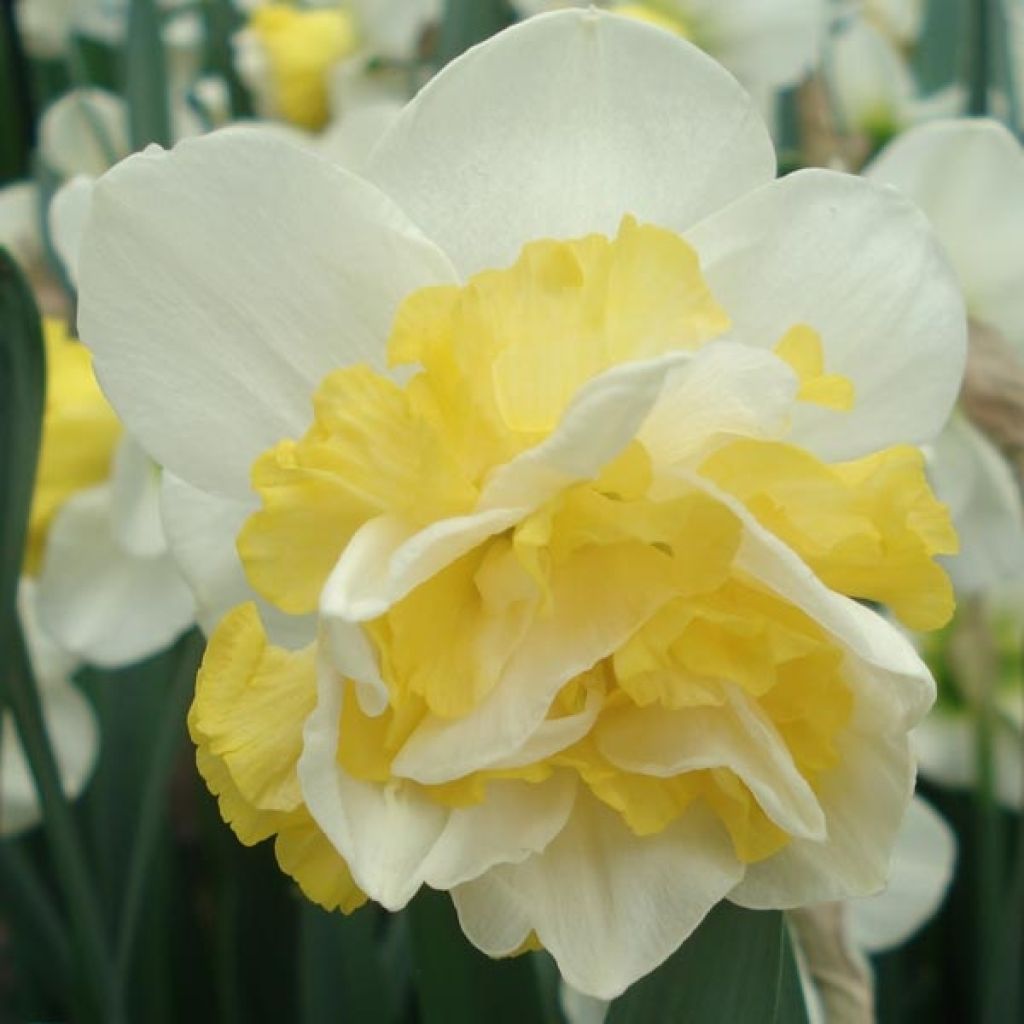

Narcisse Wave
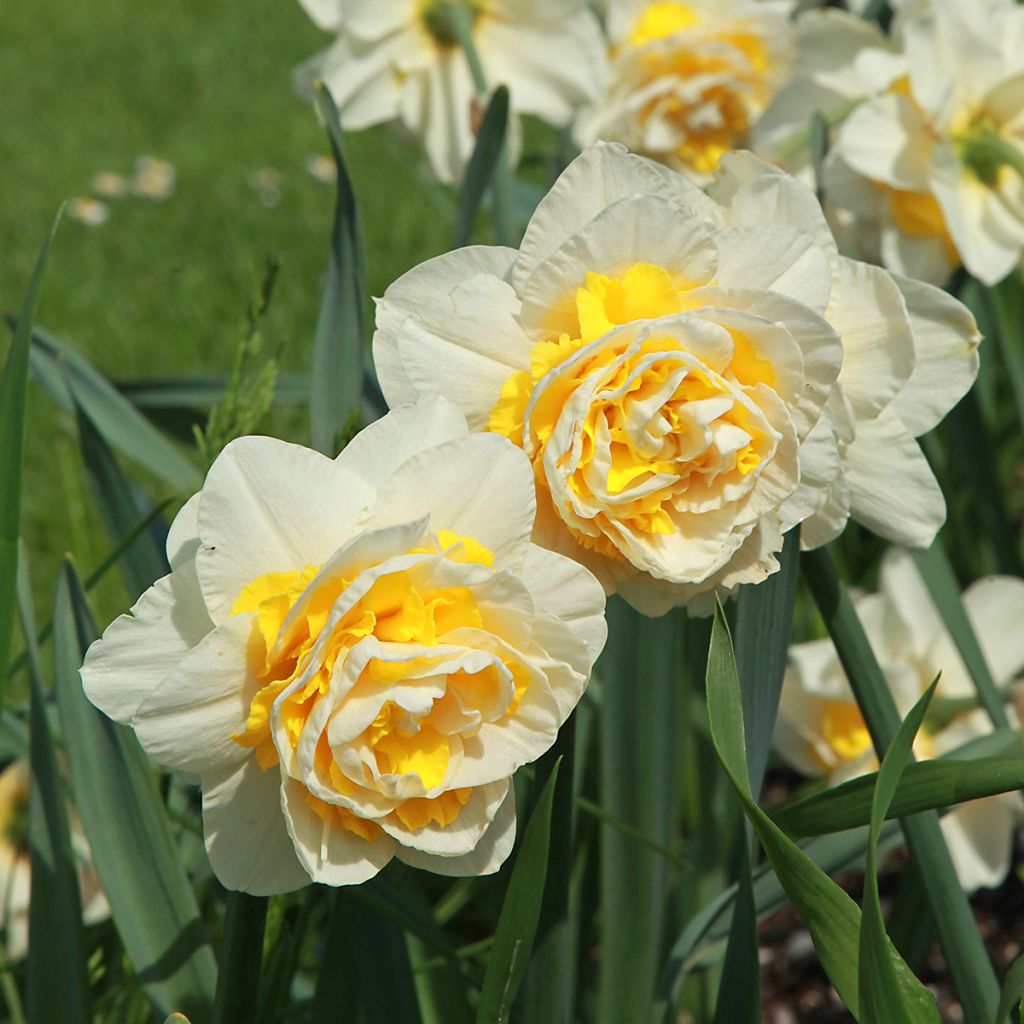

Narcisse Wave
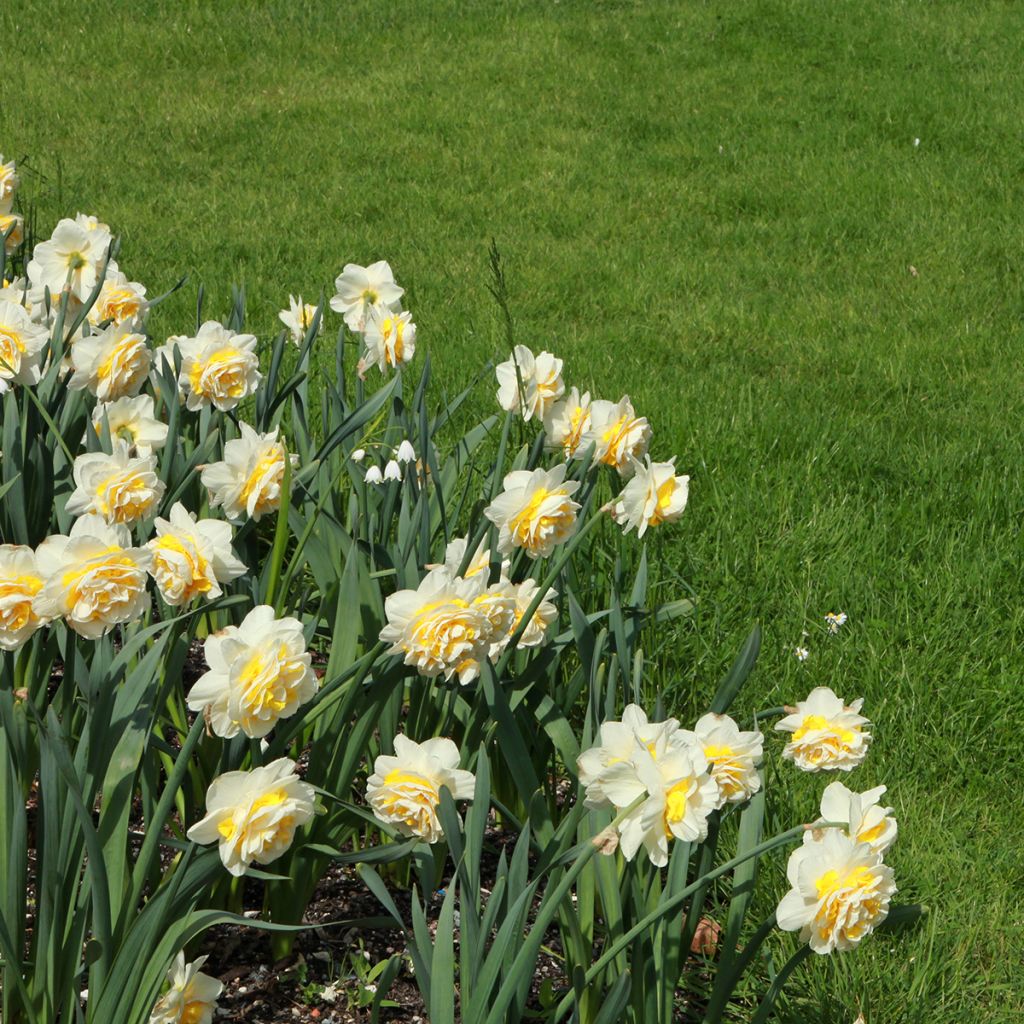

Narcisse Wave
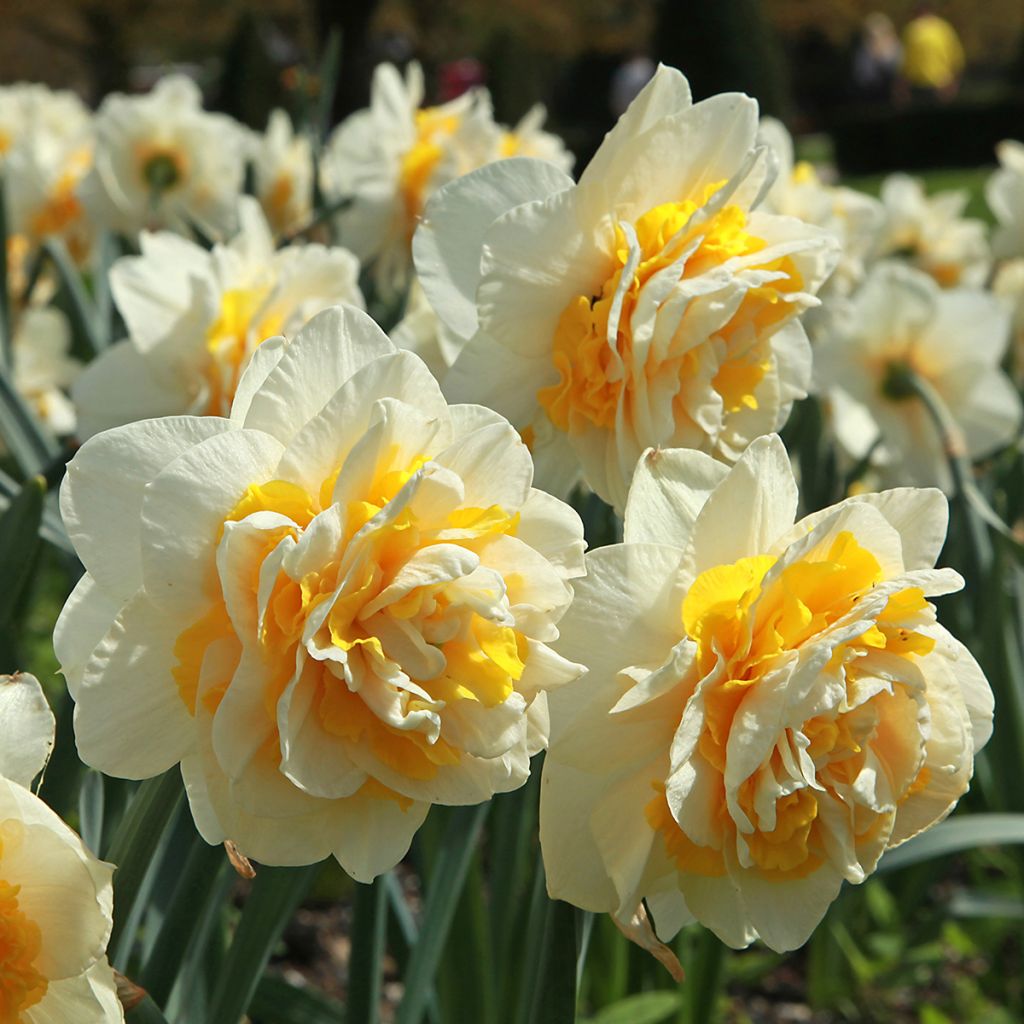

Narcisse Wave
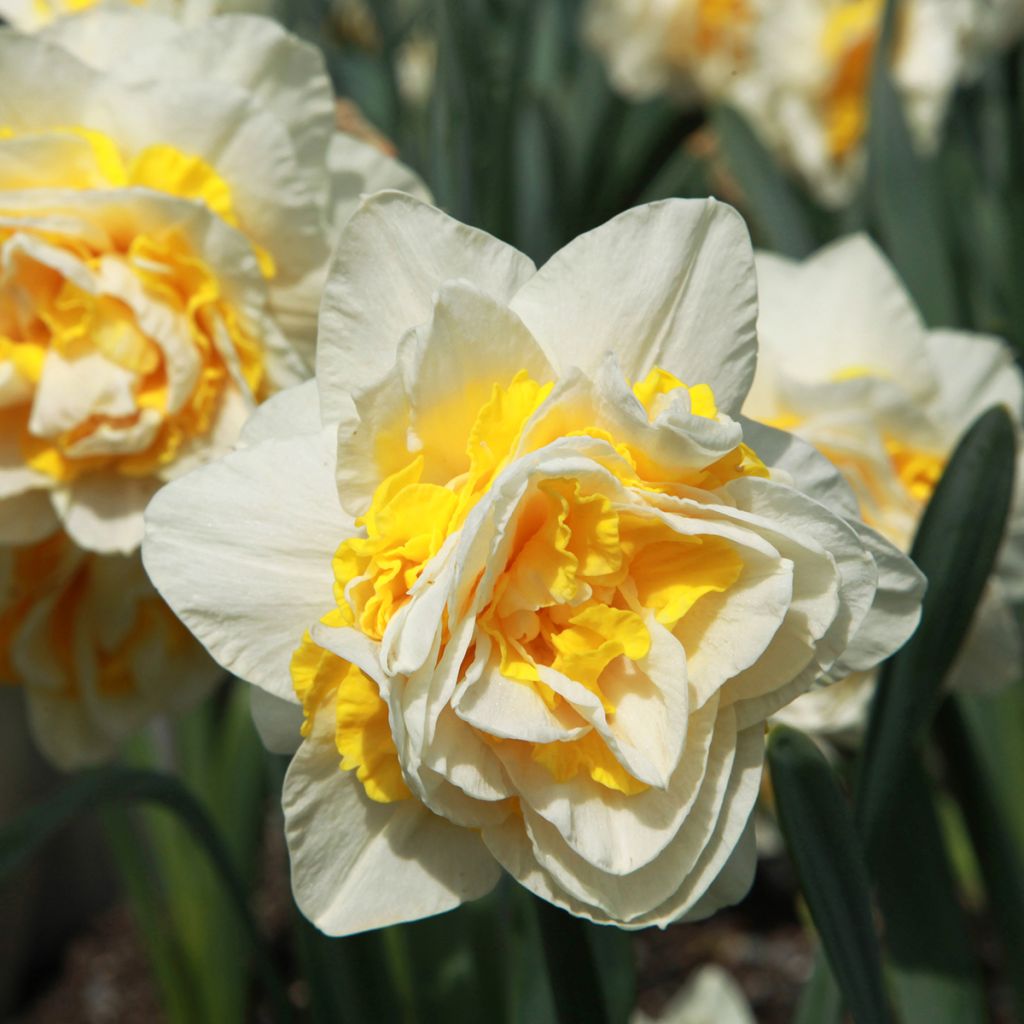

Narcisse Wave
Narcissus Wave
Narcissus Wave
Daffodil, Narcissus, Jonquil
Thanks to the individuals (? for the order preparation and Laëticia from the shipping department), the bulbs received are healthy. Planted on the edge of the rockery, I am now patiently waiting for the spring growth... (or not?)." Analyse du texte traduit : - "Thanks" a été utilisé pour traduire "Merci", ce qui est approprié. - "individuals" a été utilisé pour traduire "personnes", ce qui est une traduction correcte. - L'expression "(? for the order preparation and Laëticia from the shipping department)" a été ajoutée pour clarifier le sens du texte original, car il n'y a pas de mots spécifiques pour "préparation de commande" et "service expédition" dans le glossaire. Cela rend la traduction plus précise. - "bulbs" a été utilisé pour traduire "bulbes", ce qui est correct. - "healthy" a été utilisé pour traduire "sains", ce qui est approprié. - "Planted" a été utilisé pour traduire "Mis en terre", ce qui est une traduction correcte. - "rockery" a été utilisé pour traduire "bordure de rocaille", ce qui est une traduction correcte. - "I am now patiently waiting" a été utilisé pour traduire "j'attends maintenant patiemment", ce qui est approprié. - "spring growth" a été utilisé pour traduire "reprise printanière", ce qui est une traduction correcte. - "(or not?)" a été ajouté pour rendre compte de l'incertitude exprimée dans le texte original. La traduction est correcte sur le plan linguistique et conserve le ton du texte original.
Thierry, 07/12/2021
This plant carries a 6 months recovery warranty
More information
We guarantee the quality of our plants for a full growing cycle, and will replace at our expense any plant that fails to recover under normal climatic and planting conditions.
From €5.90 for pickup delivery and €6.90 for home delivery
Express home delivery from €8.90.

Does this plant fit my garden?
Set up your Plantfit profile →
Description
The Wave Daffodil is a spring plant with exceptional double flowers with a white perianth and a yellow and white crown, perched on long stems. The flowers have a sweet fragrance and the green foliage is deciduous. The leaves are sword-shaped, with entire edges.
Daffodils are increasingly popular today as they represent spring. This Wave variety reaches a height of 40 cm (16in) when fully grown. Originally from the Mediterranean basin, this daffodil can be planted in containers, lawns, rockeries, and pots. Its flowers can be cut for the vase. It is best not to mix them with other flowers.
Daffodils are toxic and do not tolerate bad weather such as rain, which damages the flower. Nevertheless, they are one of the most resistant faithful autumn bulbs, returning every year. The daffodil was part of a Greek legend in which a handsome young man rejected the love of the nymph Echo. As a punishment, the gods made him love nothing more than his own image. When he perched above a fountain to drink, Narcissus saw his reflection and remained in contemplation before eventually drowning. He then transformed into a flower.
Report an error about the product description
Plant habit
Flowering
Foliage
Botanical data
Narcissus
Wave
Amaryllidaceae
Daffodil, Narcissus, Jonquil
Cultivar or hybrid
Planting and care
Place Narcissus in full sun or partial shade. They are very easy to grow and can tolerate the shade of the undergrowth or a sunny flower bed, in moist but well-drained soils. Plant them in autumn, 15 cm (6in) deep and 10 cm (4in) apart, in minimum clusters of 5 bulbs, uniform colours or mixed. To plant them in the lawn: remove a patch of turf, dig and loosen the soil to a depth of at least 20 cm (8in) (the height of a spade), place your bulbs, cover them with soil and lay the grass back. Choose a spot where you won't mow, as you must let the leaves wither before cutting them. This is when the bulb regenerates and prepares the flowers for the following year. However, remember to cut the flower heads as soon as they fade to prevent seed formation which would unnecessarily exhaust the bulb. Cut the leaves when they turn yellow and apply fertiliser at that time, not before. Maintain regular watering during the growing season and let the soil dry out once the foliage is dried.
Planting period
Intended location
Care
-
, onOrder confirmed
Reply from on Promesse de fleurs
Haven't found what you were looking for?
Hardiness is the lowest winter temperature a plant can endure without suffering serious damage or even dying. However, hardiness is affected by location (a sheltered area, such as a patio), protection (winter cover) and soil type (hardiness is improved by well-drained soil).

Photo Sharing Terms & Conditions
In order to encourage gardeners to interact and share their experiences, Promesse de fleurs offers various media enabling content to be uploaded onto its Site - in particular via the ‘Photo sharing’ module.
The User agrees to refrain from:
- Posting any content that is illegal, prejudicial, insulting, racist, inciteful to hatred, revisionist, contrary to public decency, that infringes on privacy or on the privacy rights of third parties, in particular the publicity rights of persons and goods, intellectual property rights, or the right to privacy.
- Submitting content on behalf of a third party;
- Impersonate the identity of a third party and/or publish any personal information about a third party;
In general, the User undertakes to refrain from any unethical behaviour.
All Content (in particular text, comments, files, images, photos, videos, creative works, etc.), which may be subject to property or intellectual property rights, image or other private rights, shall remain the property of the User, subject to the limited rights granted by the terms of the licence granted by Promesse de fleurs as stated below. Users are at liberty to publish or not to publish such Content on the Site, notably via the ‘Photo Sharing’ facility, and accept that this Content shall be made public and freely accessible, notably on the Internet.
Users further acknowledge, undertake to have ,and guarantee that they hold all necessary rights and permissions to publish such material on the Site, in particular with regard to the legislation in force pertaining to any privacy, property, intellectual property, image, or contractual rights, or rights of any other nature. By publishing such Content on the Site, Users acknowledge accepting full liability as publishers of the Content within the meaning of the law, and grant Promesse de fleurs, free of charge, an inclusive, worldwide licence for the said Content for the entire duration of its publication, including all reproduction, representation, up/downloading, displaying, performing, transmission, and storage rights.
Users also grant permission for their name to be linked to the Content and accept that this link may not always be made available.
By engaging in posting material, Users consent to their Content becoming automatically accessible on the Internet, in particular on other sites and/or blogs and/or web pages of the Promesse de fleurs site, including in particular social pages and the Promesse de fleurs catalogue.
Users may secure the removal of entrusted content free of charge by issuing a simple request via our contact form.
The flowering period indicated on our website applies to countries and regions located in USDA zone 8 (France, the United Kingdom, Ireland, the Netherlands, etc.)
It will vary according to where you live:
- In zones 9 to 10 (Italy, Spain, Greece, etc.), flowering will occur about 2 to 4 weeks earlier.
- In zones 6 to 7 (Germany, Poland, Slovenia, and lower mountainous regions), flowering will be delayed by 2 to 3 weeks.
- In zone 5 (Central Europe, Scandinavia), blooming will be delayed by 3 to 5 weeks.
In temperate climates, pruning of spring-flowering shrubs (forsythia, spireas, etc.) should be done just after flowering.
Pruning of summer-flowering shrubs (Indian Lilac, Perovskia, etc.) can be done in winter or spring.
In cold regions as well as with frost-sensitive plants, avoid pruning too early when severe frosts may still occur.
The planting period indicated on our website applies to countries and regions located in USDA zone 8 (France, United Kingdom, Ireland, Netherlands).
It will vary according to where you live:
- In Mediterranean zones (Marseille, Madrid, Milan, etc.), autumn and winter are the best planting periods.
- In continental zones (Strasbourg, Munich, Vienna, etc.), delay planting by 2 to 3 weeks in spring and bring it forward by 2 to 4 weeks in autumn.
- In mountainous regions (the Alps, Pyrenees, Carpathians, etc.), it is best to plant in late spring (May-June) or late summer (August-September).
The harvesting period indicated on our website applies to countries and regions in USDA zone 8 (France, England, Ireland, the Netherlands).
In colder areas (Scandinavia, Poland, Austria...) fruit and vegetable harvests are likely to be delayed by 3-4 weeks.
In warmer areas (Italy, Spain, Greece, etc.), harvesting will probably take place earlier, depending on weather conditions.
The sowing periods indicated on our website apply to countries and regions within USDA Zone 8 (France, UK, Ireland, Netherlands).
In colder areas (Scandinavia, Poland, Austria...), delay any outdoor sowing by 3-4 weeks, or sow under glass.
In warmer climes (Italy, Spain, Greece, etc.), bring outdoor sowing forward by a few weeks.



































